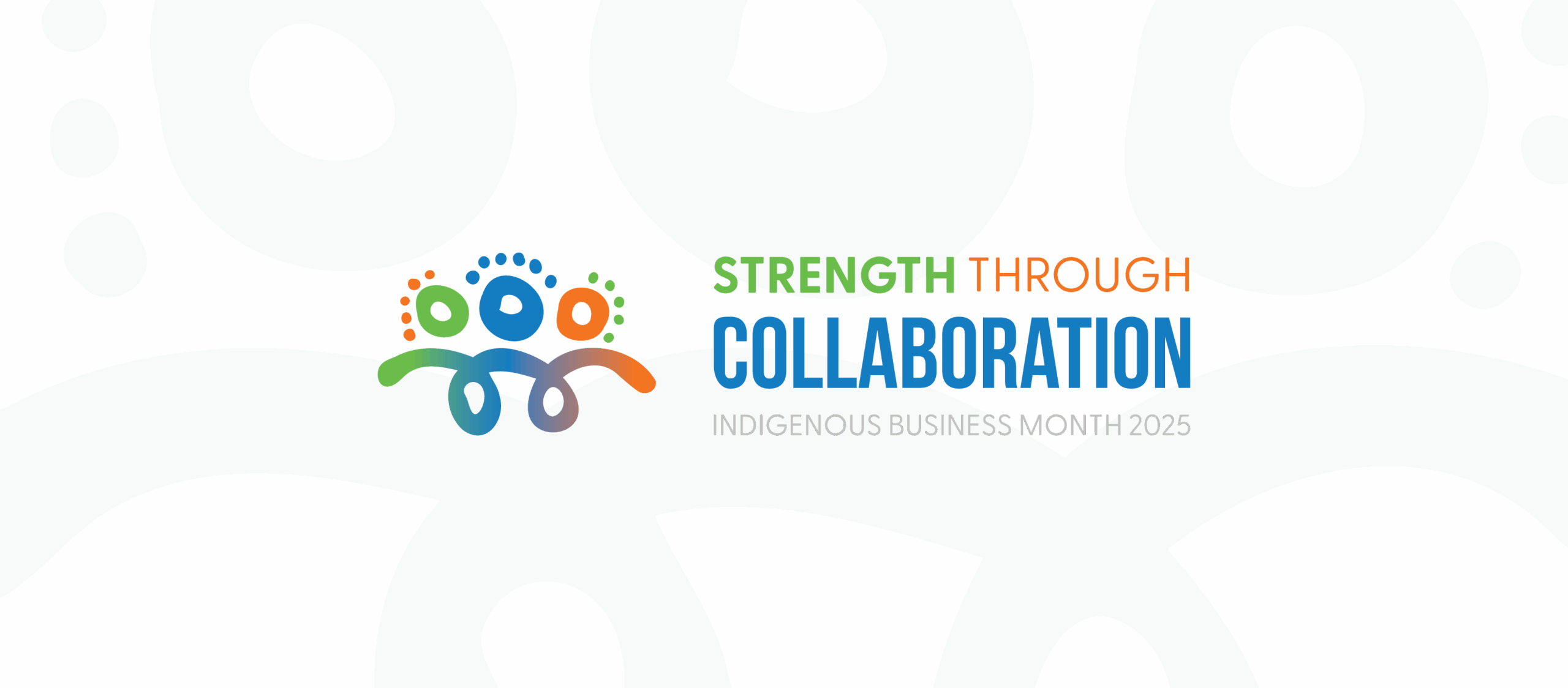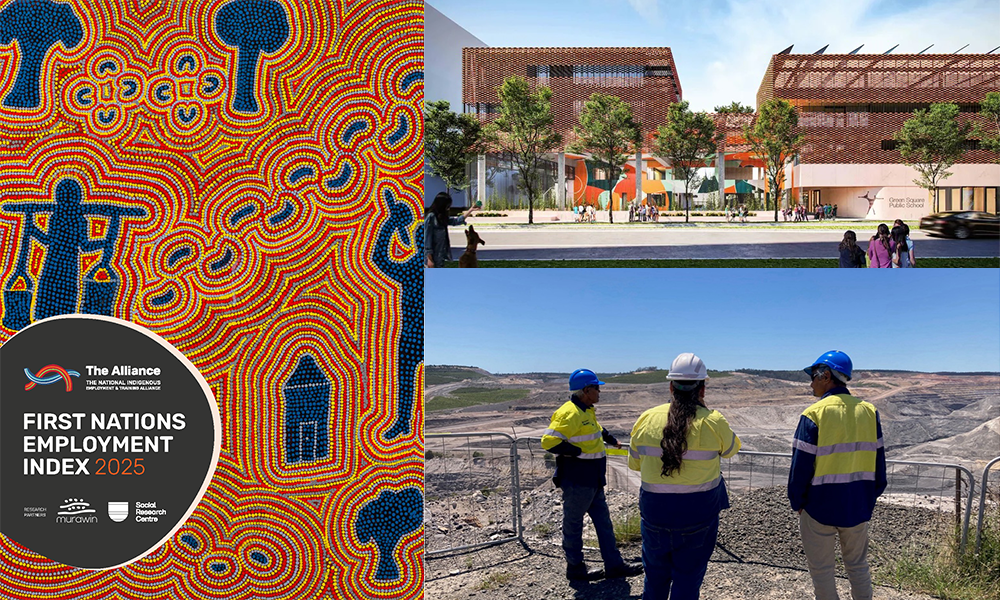Today is the first day of Indigenous Business Month and the 2025 theme, Strength Through Collaboration, invites us to reflect on the power of unity in advancing First Nations business and community aspirations. This theme underscores the importance of working together, across cultures, sectors, and generations, to build a more equitable and prosperous future.

At Murawin, we have long embraced collaboration as a core value. Our work is rooted in the belief that working in collaboration with others, grounded by community, culture and Country, leads to lasting impact. This approach aligns with IBM’s focus on celebrating Indigenous-led enterprise and fostering economic self-determination. Collaboration isn’t just a principle, it’s a way of working that shapes everything we do, realised through our Country-centric framework Barri Marruma. From research and community engagement to design and cultural frameworks, partnering with First Nations communities, businesses, and organisations allows us to deliver projects that are meaningful, impactful, and culturally grounded.

Here are some examples of recent projects where collaboration has been at the heart of our work:
First Nations Employment Index 2025
In partnership with the National Indigenous Employment and Training Alliance (NIETA) and the Social Research Centre, Murawin led the qualitative research for the First Nations Employment Index 2025. This landmark study is Australia’s most comprehensive snapshot of Indigenous employment practices and outcomes across large employers. Murawin’s role was to bring forward the voices and lived experiences of Aboriginal and Torres Strait Islander employees through interviews and focus groups, ensuring their perspectives were central to the findings. By weaving cultural insights with quantitative data, the Index shines a light on both the barriers and enablers of Indigenous employment, and provides practical pathways for organisations striving for employment parity. It demonstrates how collaboration between research, business, and community can set new benchmarks for accountability and action.
Green Square Integrated Community Facility and School
As one of Sydney’s fastest-growing urban precincts, Green Square presented an important opportunity to embed Aboriginal and Torres Strait Islander culture into the fabric of new community infrastructure. Murawin partnered with the Department of Education and the City of Sydney to ensure that the voices of local Aboriginal people and cultural heritage were deeply reflected in the design and function of the Green Square Integrated Community Facility and School. Our cultural engagement and heritage report provided guidance on how the facility could embody connection to Country, honour local histories, and create spaces where Aboriginal and Torres Strait Islander identity is visible and celebrated. This collaborative process has helped set a new precedent for how urban design can respectfully integrate First Nations culture in a meaningful way, not just symbolically but in ways that shape how the community engages with and learns from the space.
Healing Country and Building Totemic Practice Framework
Murawin worked alongside CSIRO and the Wakka Wakka Nation to co-design the Healing Country and Building Totemic Practice Framework, a pioneering pilot project that responds to the legacy of mining impacts on Country. The framework draws upon Wakka Wakka cultural knowledge and aspirations to re-establish totemic practices as a guiding force in ecological rehabilitation and cultural renewal. At its core, the project is about more than land restoration — it is about healing the deep relationship between people, culture, and Country that has been disrupted by extractive industries. By creating a model that other Aboriginal and Torres Strait Islander Nations can adapt, the framework demonstrates how collaborative partnerships rooted in cultural authority can reshape environmental practice. It highlights that when Indigenous knowledge systems lead, the outcomes benefit not only Country but also community wellbeing and intergenerational resilience.

The Importance of Collaboration in First Nations Business
Collaboration is more than a strategic approach; it is a cultural practice within Indigenous communities. Traditional ways of working together, through shared decision-making, mutual respect, and collective responsibility, have sustained communities for more than 80,000 years.
In the contemporary business landscape, these practices continue to be vital. By collaborating, First Nations businesses can leverage each other’s strengths, share resources, and amplify their impact. This unity not only drives economic development but also fosters social cohesion and cultural resilience. Importantly, it positions Indigenous business as a key driver in Closing the Gap, creating pathways for greater employment, education, and health outcomes, and ensuring that economic and social benefits flow through communities in ways that respect culture and country.
Looking Ahead
As we celebrate Indigenous Business Month 2025, let us honour the spirit of collaboration that has always been at the heart of First Nations communities. At Murawin, we remain committed to working together, with Indigenous businesses, communities, and allies, to create a future where prosperity is shared, and cultural integrity is upheld.
